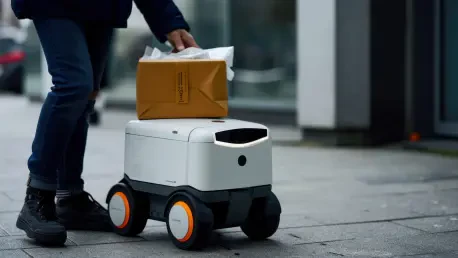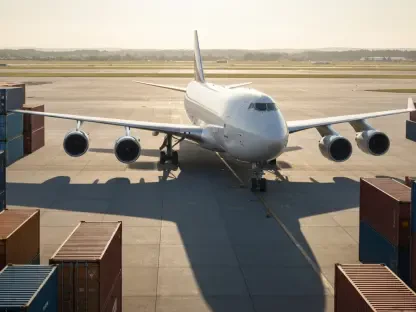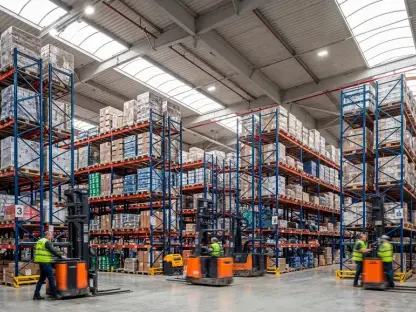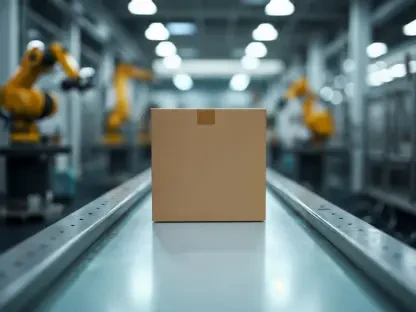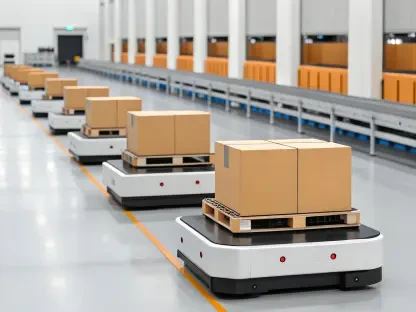Americans now expect groceries ordered at lunch to appear by dinner, often within an hour, yet the robots built to make that promise profitable struggled when miles stretched long and density thinned across suburbia and exurbia. That tension—speed at the doorstep versus distance in the network—framed the bold rise and sharp recalibration of large-scale, centralized grocery automation in the United States.
The model looked irresistible on paper: centralized, highly automated customer fulfillment centers (CFCs) using goods-to-person robots, dense storage grids, and sophisticated orchestration promised low unit cost, high accuracy, and broad assortment. It worked in the U.K., where short last miles and entrenched online habits underpinned steady volumes. In this market, Kroger embraced Ocado’s platform to vault ahead in e-grocery, betting that customers would accept “fast enough” delivery for better prices and fuller baskets.
What The Technology Promised
At the core sat Ocado’s stack: swarms of bots racing over an aluminum grid, fetching totes to stations where workers assembled orders guided by software that optimized routes, slots, and inventory. The system excelled at large baskets, high pick rates, and consistent quality, all while reducing labor per order and boosting inventory productivity.
However, centralized muscle met geographic reality. The United States spreads demand across wider catchments, where siting a CFC outside a metro adds miles to every stop and raises the bar for route density. Even with spoke sites to push orders closer to neighborhoods, utilization sagged when volumes waxed and waned, and delivery promises tightened.
How It Performed In Practice
When running hot, CFCs achieved strong throughput and uptime, with impressive accuracy and minimal shrink. Basket assembly for weekly shops remained a standout, making the model appealing for planned orders with flexible delivery windows. The economics hinged on high, steady volumes to amortize fixed costs and keep trucks full.
Yet speed became the decisive lever. Instacart, DoorDash, and grocers’ own store-based programs reset expectations to same-day and next-hour, often leaning on gig fleets. Each minute saved at the edge blunted the advantage of centralized batching, pushing consumers toward the near-store option even if fees were higher.
The Network And The Last Mile
A hub-and-spoke design extended reach, but each spoke added handling and required dense routing to make the math work. In exurban placements, the network struggled to keep vans tightly packed and paths short, a problem compounded by volatile demand patterns post-pandemic.
Dedicated fleets offered control and reliable service levels, while third-party networks delivered speed and flexibility. The trade-off was predictable: cost discipline versus responsiveness. As consumer willingness to trade time for price faded, mixed fleets increasingly made sense.
Store-Centric Alternatives
Store-based picking proved faster to scale and capital-light. Workers pulled from existing shelves, staged orders in backrooms, and tapped nearby gig networks for rapid dispatch. Assortment was narrower than a CFC’s, but proximity covered a multitude of sins when customers prioritized immediacy.
Micro-fulfillment centers (MFCs) inside or adjacent to stores offered a middle path. Smaller grids and partial automation improved pick rates without the massive footprint. Even so, MFCs demanded high-volume nodes and careful SKU curation to justify their cost, making selective deployment the pragmatic choice.
Economics That Drove The Pivot
The fixed-versus-variable split defined outcomes. CFCs carried heavy capital and needed high utilization to hit breakeven; store models shifted more cost to variable labor and delivery fees, matching demand more closely. The volume–density–speed triangle decided winners in each market, not the elegance of the hardware.
As growth normalized, Kroger recalibrated. In late 2023, it paused new sites; in early 2024, it shuttered spokes that missed benchmarks. By this year, leadership ordered a site-by-site review and moved to close three CFCs, aiming for a $400 million profitability lift while absorbing about $2.6 billion in charges.
Comparative Models And Where They Fit
The U.K. remained fertile ground for centralized automation—shorter drives, tighter postcodes, and habitual online ordering support the model’s strengths. In the U.S., regional grocers leaned harder into store-centric picking, while national chains blended marketplaces for demand and logistics to smooth peaks.
Selective MFC pilots emerged in dense urban and first-ring suburban corridors, particularly where parking, labor, and slot availability could make or break customer loyalty. The theme was consistent: right-size automation to local conditions, not the other way around.
Strategic Direction For Grocers
The reset tilted Kroger toward proximity. Stores became the default fulfillment engine, with deeper ties to third-party delivery to flex capacity. Automation did not vanish; it shifted to targeted, capital-light pilots tied to clear volume thresholds and tight catchments.
Data and AI took center stage: forecasting demand at the slot and zone level, optimizing pick paths, and planning workforce by hour improved service reliability and unit economics. Smarter orchestration, not just more robots, became the performance multiplier.
Implications For Ocado
Ocado faced reputational and financial pressure as its flagship U.S. deployment shrank. The core question sharpened: which parts of the stack travel well across geographies? Modular offerings, pay-as-you-scale pricing, and performance guarantees now look essential to win deals where density is uneven and speed dictates consumer choice.
Vendors that package smaller-footprint robotics, interoperable software, and clean integration paths into store systems will find more open doors. Proof will rest on measured gains—faster picks, higher availability, better basket economics—delivered without outsized capex.
Risks And Mitigations
Integration complexity, multi-node inventory sync, and uptime at scale remained technical hurdles. Labor rules and local ordinances shaped delivery choices, while suburban and rural demand volatility tested pricing power on fees and memberships.
Mitigation flowed from hybrid design: combine CFCs for depth where volumes justify them, stores for speed almost everywhere, and MFCs only where demand is dense and stable. Layer dynamic delivery pricing, ad and retail media offsets, and continuous improvement loops to keep margins intact.
Verdict
Online grocery automation in the U.S. delivered clear strengths—accuracy, labor leverage, and inventory depth—but the CFC-led approach underperformed when distance, siting, and speed expectations collided with fixed-cost realities. The winning path leaned on proximity, flexible partnerships, and disciplined, modular automation tied to density. The practical next steps favored store-centric fulfillment, targeted MFCs in high-volume nodes, and smarter orchestration that stitched networks into a cohesive, data-driven system. Under those conditions, automation shifted from moonshot to toolset, and the market’s center of gravity moved toward local, adaptable, and capital-efficient e-grocery models.
